Table of contents
- Introduction: The Power of Improvement Exchanges
- What is a 1031 Improvement Exchange?
- How 1031 Improvement Exchanges Work
- Rules to Know: IRS Requirements and Timing for Improvement Exchanges
- Advantages of a 1031 Improvement Exchange
- Common Challenges and Pitfalls in Improvement Exchanges
- Case Study: A Beginner’s Success with a 1031 Improvement Exchange
- Expert Tips for Beginner Investors Considering an Improvement Exchange
- Conclusion: Is an Improvement Exchange Right for You?
Introduction: The Power of Improvement Exchanges
Imagine turning a modest property into a goldmine without paying capital gains taxes. Sound too good to be true? With a 1031 improvement exchange, it’s possible. Real estate investors can use these exchanges to make property improvements, build value, and defer taxes.
In this guide, we’ll walk through the ins and outs of improvement exchanges. We’ll cover how they work, the rules you need to know, and how you can use them to enhance your investment returns.
Let’s dive in and see how a 1031 improvement exchange can become one of your best investment tools.
What is a 1031 Improvement Exchange?
A 1031 improvement exchange, also called a “construction exchange,” lets you reinvest sale proceeds into a new property with enhancements. Unlike a standard 1031 exchange, an improvement exchange allows you to build on, repair, or add value to a property rather than simply buying an existing property as-is. This approach means you can mold a property to your exact needs and increase its overall worth.
Key Benefits of an Improvement Exchange
Improvement exchanges offer unique benefits, especially for investors looking to add value:
- Boost Property Value: You can use exchange funds to improve the property rather than paying a lump sum tax.
- Tax Deferral on Capital Gains: Like all 1031 exchanges, construction exchanges let you defer capital gains taxes.
- Customizable Property: Gain the freedom to improve a property to meet your goals, whether for higher rental rates or a future sale.
How 1031 Improvement Exchanges Work
The improvement exchange process involves several important steps. Working with a qualified intermediary is essential, as they will hold the funds and manage each phase.
Step 1: Sell Your Original Property
Begin by selling your initial property, also known as the “relinquished property.” Just like in a standard 1031 exchange, this triggers the start of your 1031 timeline. You have 180 days to complete the 1031 construction exchange.
Step 2: Identify the New Property and Improvements Within 45 Days
After selling your property, you’ll have 45 days to identify your replacement property and the specific improvements you plan to make. This is an essential requirement and part of the IRS’s identification rules.
Step 3: Use Exchange Funds to Improve the Property
Once you purchase the new property, your qualified intermediary holds the funds. You can now use this capital to make your planned improvements. Improvements can include structural changes, interior renovations, landscaping, or any other upgrades that enhance the property’s value.
Rules to Know: IRS Requirements and Timing for Improvement Exchanges
To benefit from a 1031 improvement exchange, you must follow strict IRS rules. These regulations ensure you use the exchange properly and avoid penalties.
The Value Rule
The IRS requires you to spend all exchange proceeds on the replacement property or its improvements. The adjusted value of your improved property must equal or exceed the sale price of the relinquished property. For example, if you sell a property for $500,000, your replacement property (plus any improvements) must also be worth at least $500,000 by the time the exchange period ends.
Timing Requirements
You must complete your improvement exchange within 180 days. This includes the acquisition and any planned improvements. Failure to meet this deadline can result in a failed exchange and tax liabilities on capital gains. Work closely with your contractor and intermediary to create a realistic timeline and keep your project on track.
Eligible Improvements
Not all types of work qualify as improvements in a 1031 exchange. Typically, eligible improvements are those that add value to the property, such as:
- Structural Improvements: Additions or remodels that improve the building.
- Functional Enhancements: Adding essential systems, like HVAC or plumbing.
- Aesthetic Upgrades: Painting, landscaping, and interior finishes that increase the property’s appeal.
Advantages of a 1031 Improvement Exchange
Improvement exchanges open up unique possibilities that standard 1031 exchanges don’t offer. Here’s how they can help you create long-term value:
Increased Cash Flow Potential
Improvements often lead to higher cash flow, especially when the upgrades attract higher-quality tenants or increase rental rates. For instance, a basic renovation could transform a single-family rental into a higher-income property. With a 1031 improvement exchange, you can fund these enhancements tax-deferred, boosting your cash flow without using out-of-pocket cash.
Greater ROI on Property Investments
Many real estate investors see better returns when they can customize a property. A basic multifamily unit, for example, can be transformed into a more upscale apartment building with a few strategic upgrades. Improvements add value, and that value multiplies when you eventually sell or continue to earn rental income.
More Control Over Your Investment Outcome
Standard 1031 exchanges require purchasing a property as-is, with limited opportunities for modifications. An improvement exchange provides flexibility. You can customize a property to better fit the market or your investment goals. Whether you plan to hold the property or sell it later, improvement exchanges give you more control over the final product.
Common Challenges and Pitfalls in Improvement Exchanges
While 1031 improvement exchanges offer great potential, there are challenges to be aware of. Here’s what to watch out for and how to avoid common pitfalls.
Financing Complications
Improvement costs often exceed the funds from your initial sale. If your improvements require extra financing, you’ll need to arrange additional funds outside the exchange. Lenders may not always understand 1031 exchanges, so it’s essential to work with experienced professionals who can help navigate the financing process.
Risk of Incomplete Improvements
If you don’t complete improvements within the 180-day period, the IRS considers the exchange incomplete. This outcome could mean significant tax penalties. To avoid delays, keep communication strong between your contractors and your intermediary, and have a contingency plan if things take longer than expected.
Strict IRS Guidelines
Following the IRS’s rules for improvement exchanges is essential. Missteps can lead to penalties or a failed exchange. Make sure you understand what counts as a qualifying improvement, and document everything carefully for compliance.
Case Study: A Beginner’s Success with a 1031 Improvement Exchange
Let’s look at a real-life example of a beginner investor who turned a modest property into a profitable asset with a 1031 improvement exchange.
The Scenario
Emily, a first-time investor, bought a small commercial property for $300,000. She sold this property for $450,000 after making initial improvements. But instead of paying capital gains tax, she decided to reinvest using a 1031 improvement exchange.
The Strategy
Emily identified a new property: a small, outdated multi-unit building. She planned a $150,000 renovation to upgrade the units and attract higher-income tenants. Her qualified intermediary managed the funds, and she set a 180-day improvement timeline.
The Result
With the improvements completed on time, Emily’s new property value reached $500,000. The renovations allowed her to charge higher rents and nearly doubled her monthly cash flow. By choosing an improvement exchange, Emily deferred $75,000 in capital gains taxes and gained a valuable, income-generating asset.
Expert Tips for Beginner Investors Considering an Improvement Exchange
If you’re considering a 1031 construction exchange, preparation is key. Here are some tips to get the best results from your exchange.
Plan Ahead
A well-thought-out plan helps your project stay on schedule and within budget. Make sure you know exactly which improvements you’ll make, how much they’ll cost, and the timeline needed to complete them. Start this planning process early to ensure a smooth exchange.
Work with the Right Professionals
You’ll need a qualified intermediary to handle your funds and file the necessary paperwork. In addition, find experienced contractors and tax advisors familiar with improvement exchanges. Working with the right professionals will ensure the process stays compliant and reduce the risk of delays.
Stay Organized with Documentation
Keep track of all expenses, invoices, and receipts related to your improvements. Documentation is essential in proving to the IRS that your funds were used for qualified improvements. A well-documented exchange is less likely to face issues during IRS review.
Conclusion: Is an Improvement Exchange Right for You?
A 1031 improvement exchange can be a game-changer, letting you reinvest tax-deferred gains into a more valuable property. By following IRS rules and working with knowledgeable professionals, you can transform a property, boost cash flow, and increase your investment’s value.
If you’re ready to take your real estate portfolio to the next level, consult with a qualified intermediary and see if an improvement exchange aligns with your goals. You could unlock hidden potential, defer taxes, and create the kind of investment success that only 1031 exchanges can provide.
This comprehensive guide is designed to give beginner investors a strong foundation in using 1031 construction exchanges effectively. Now, you have the tools to explore this powerful exchange strategy and decide if it’s right for you.

Real Estate Agents and 1031 Exchanges: A Crucial Partnership

Yes, You Can Finance Your 1031 Exchange Property – Here’s How



